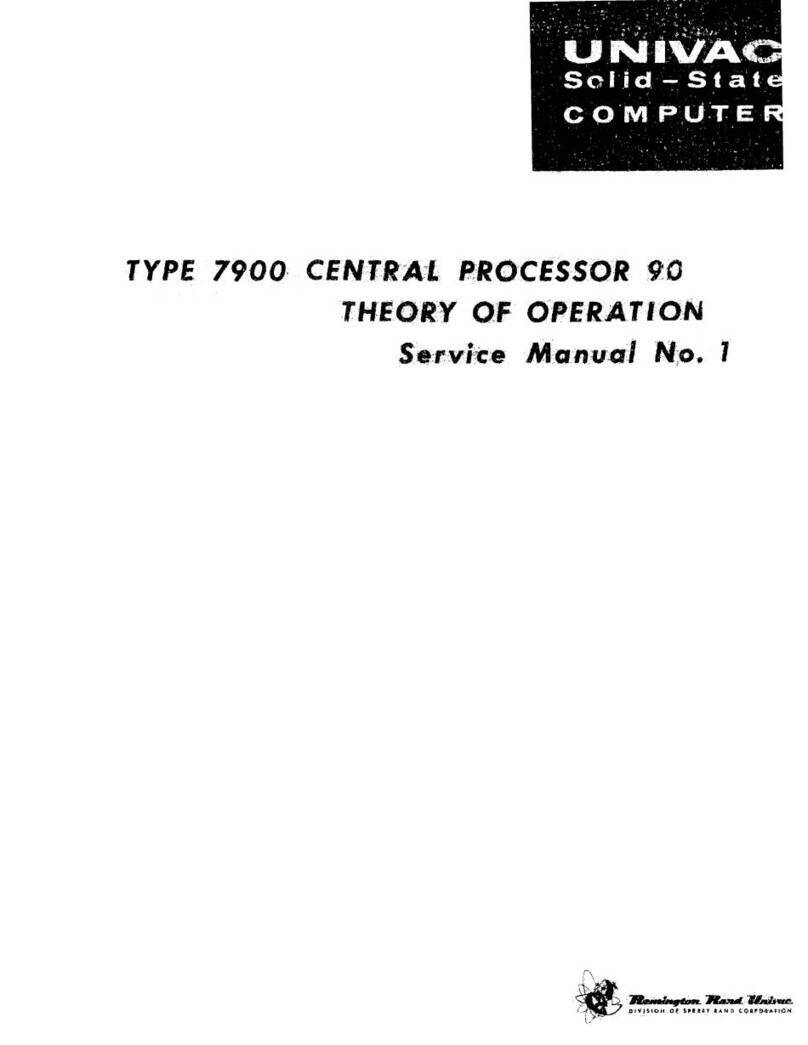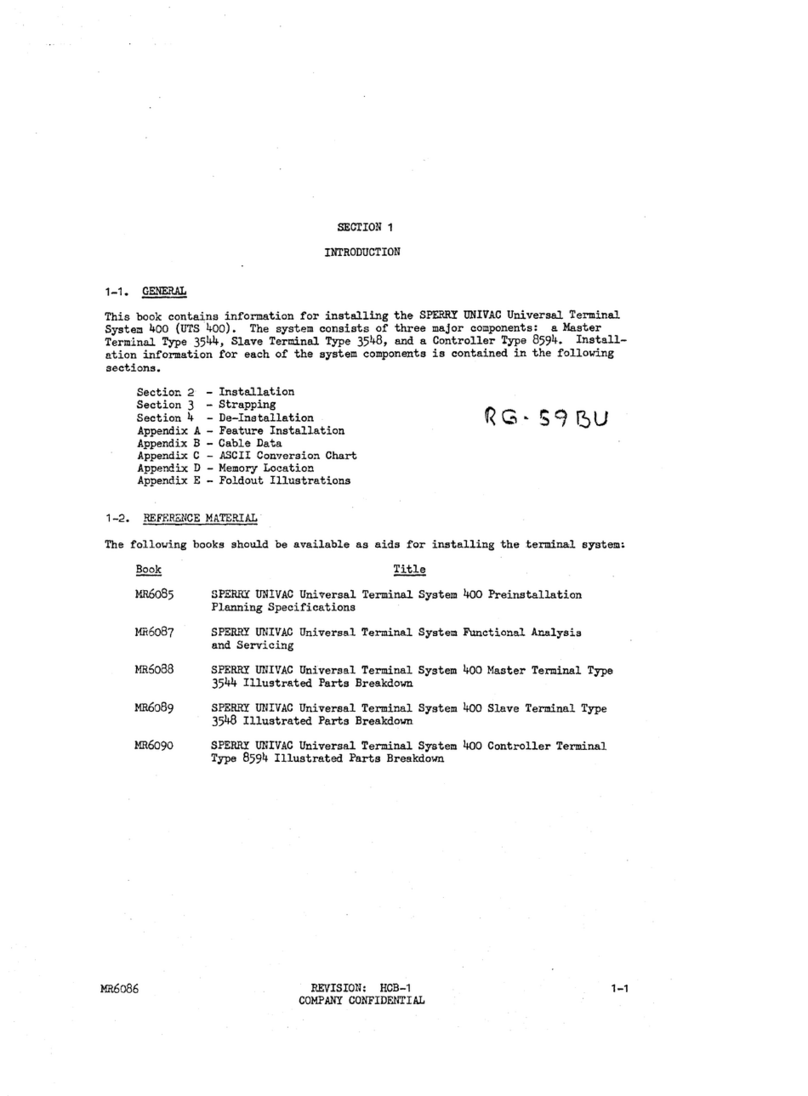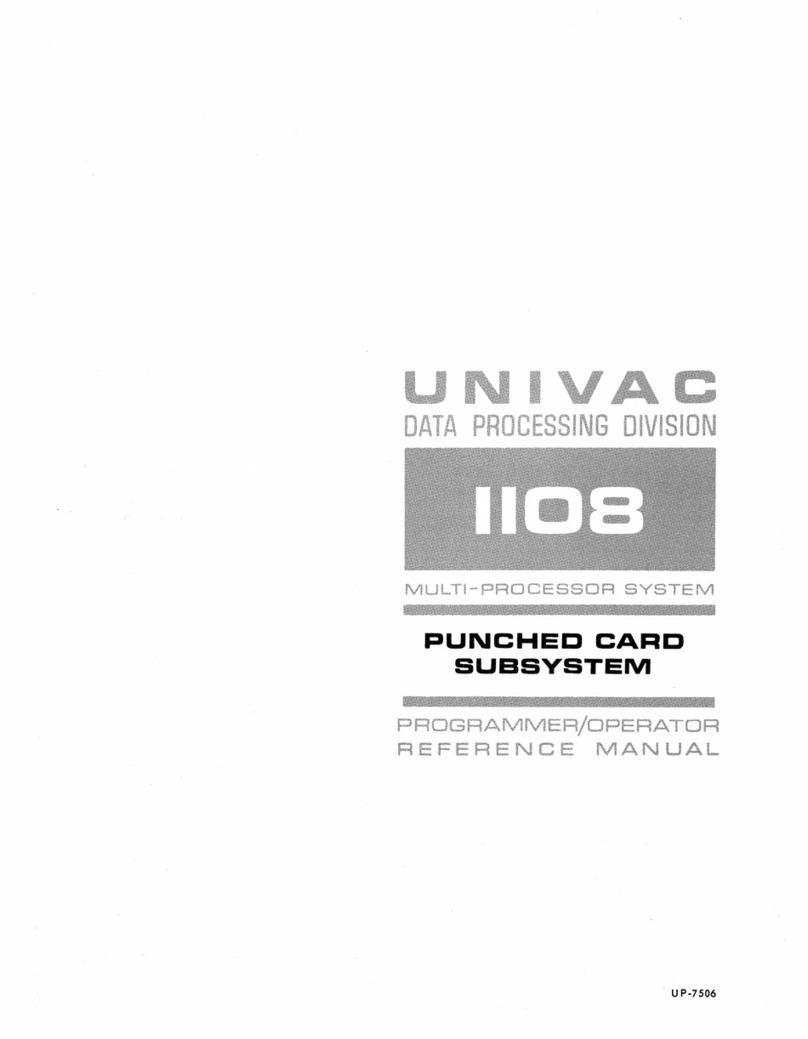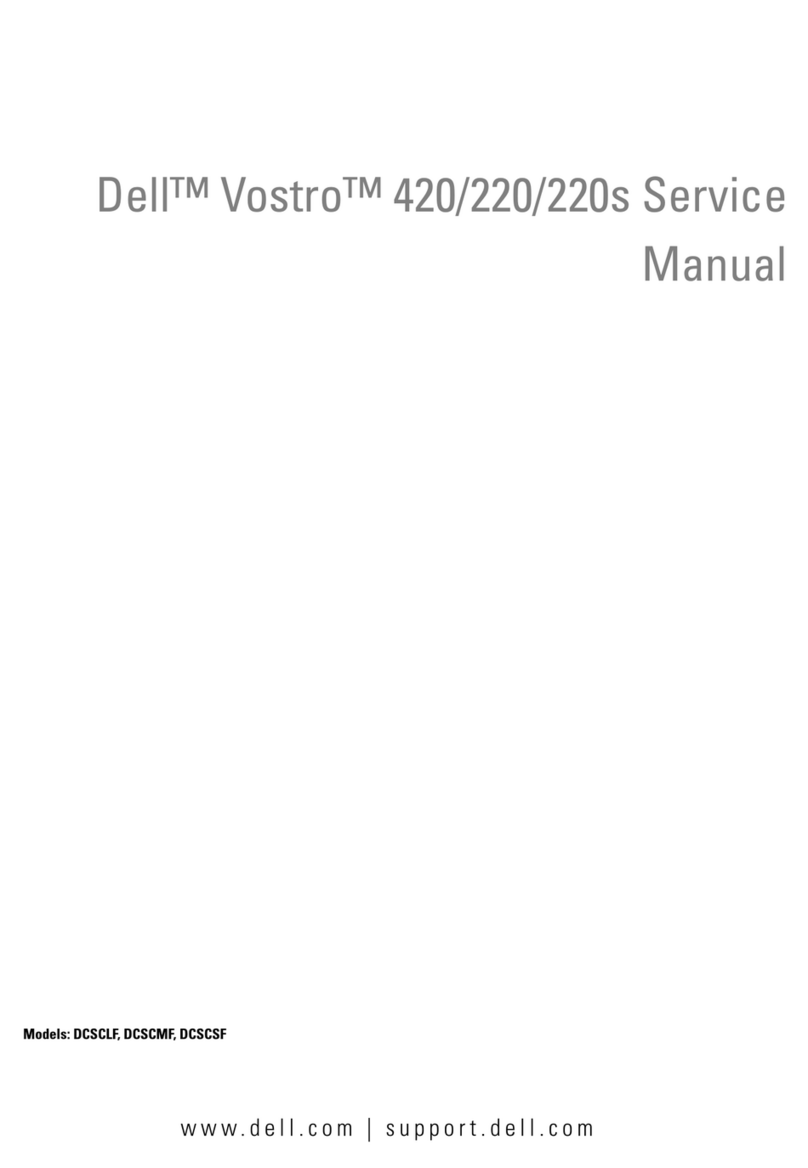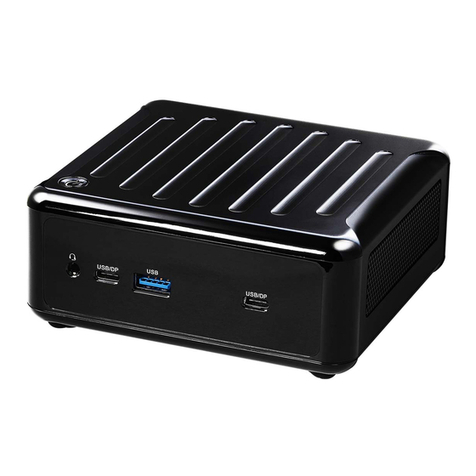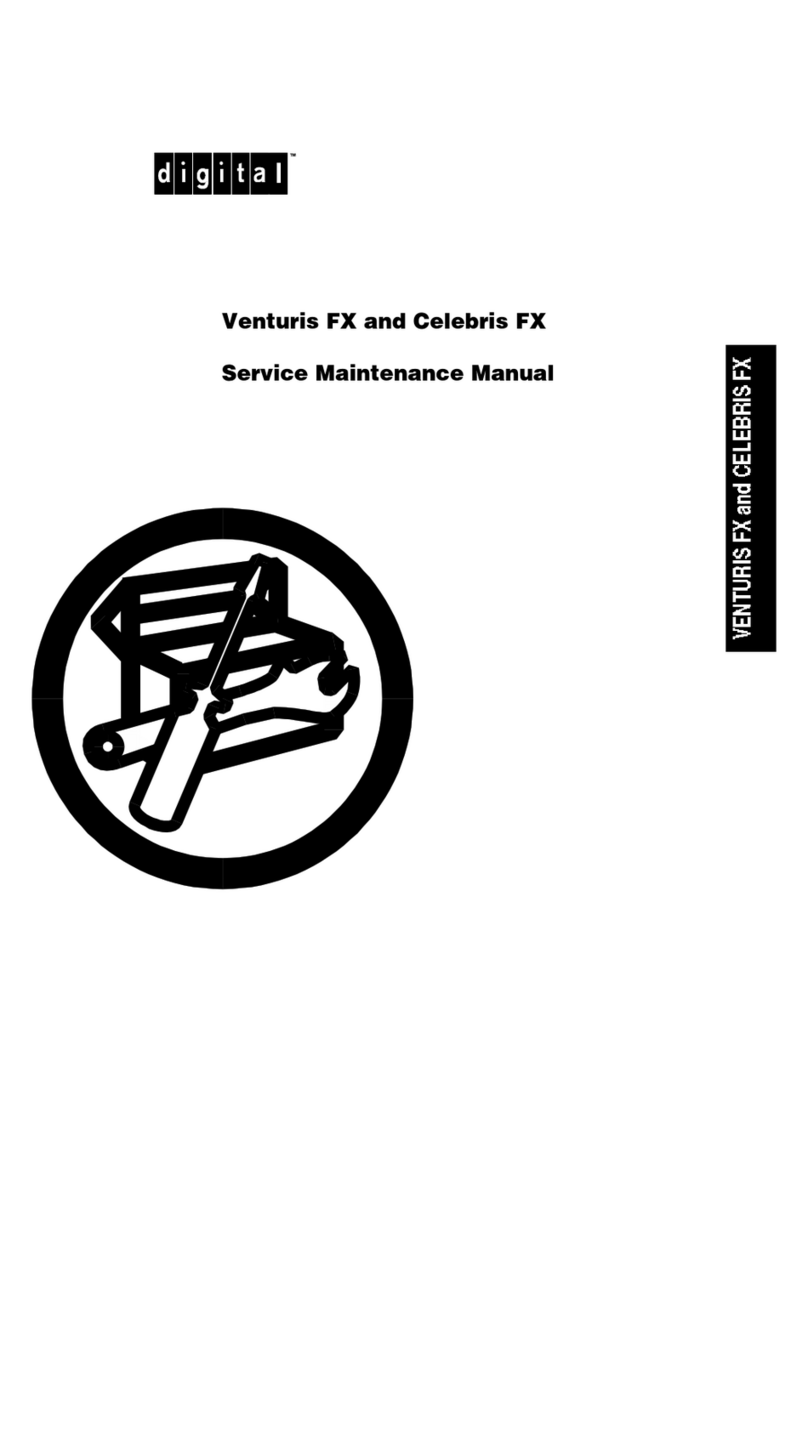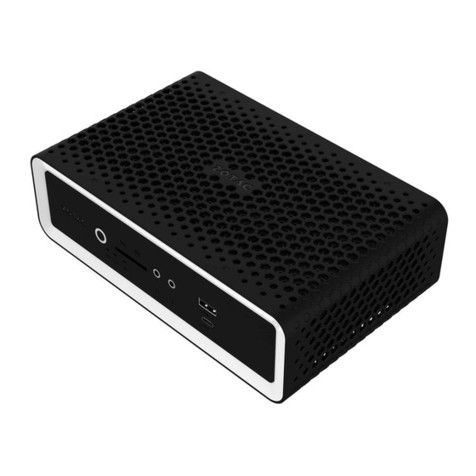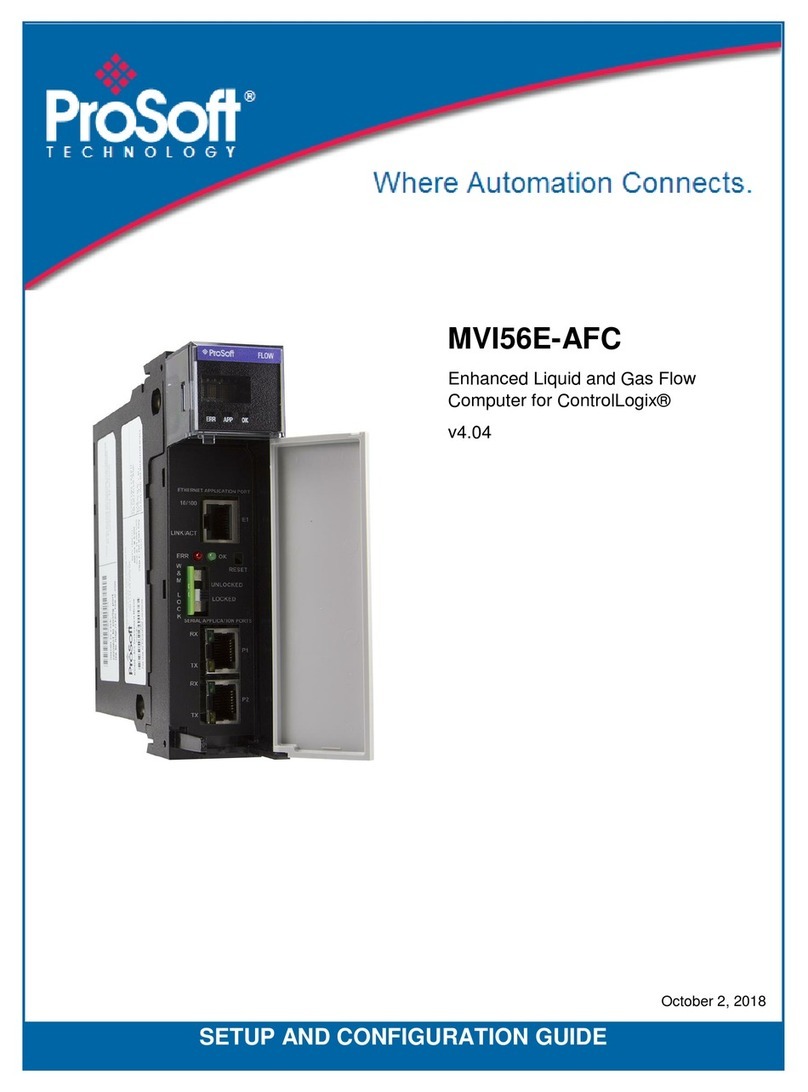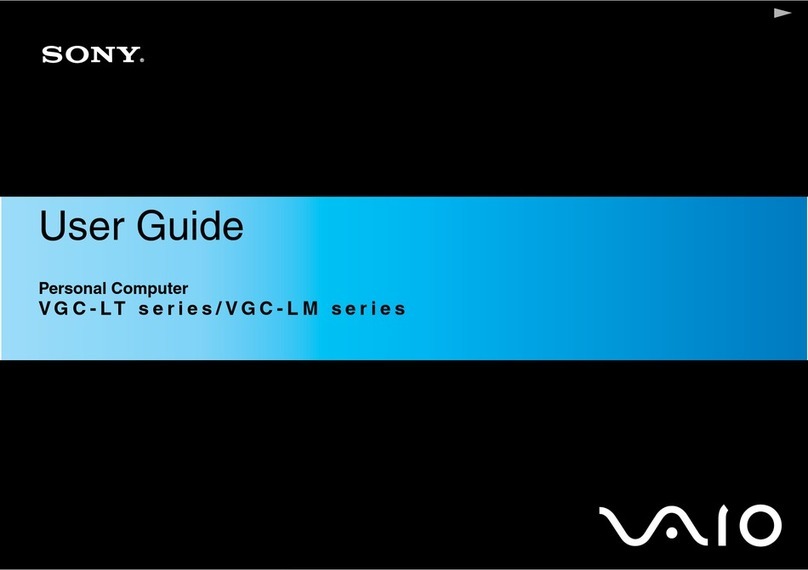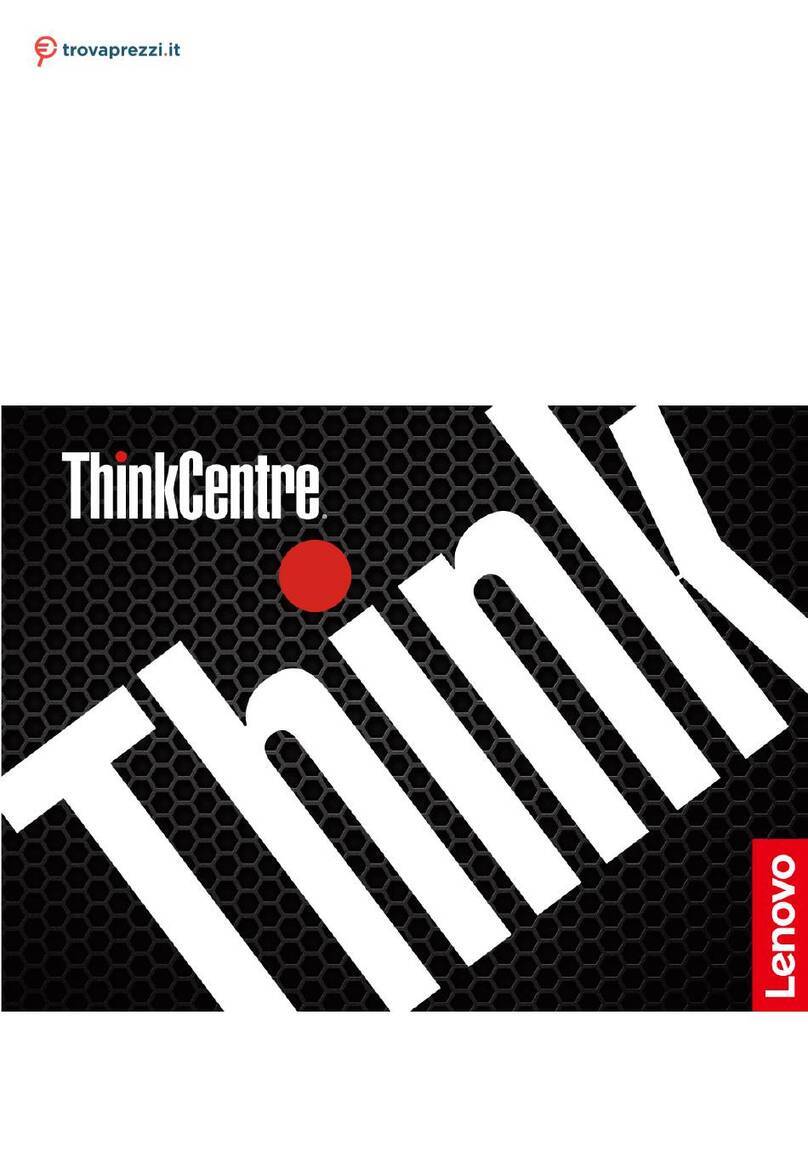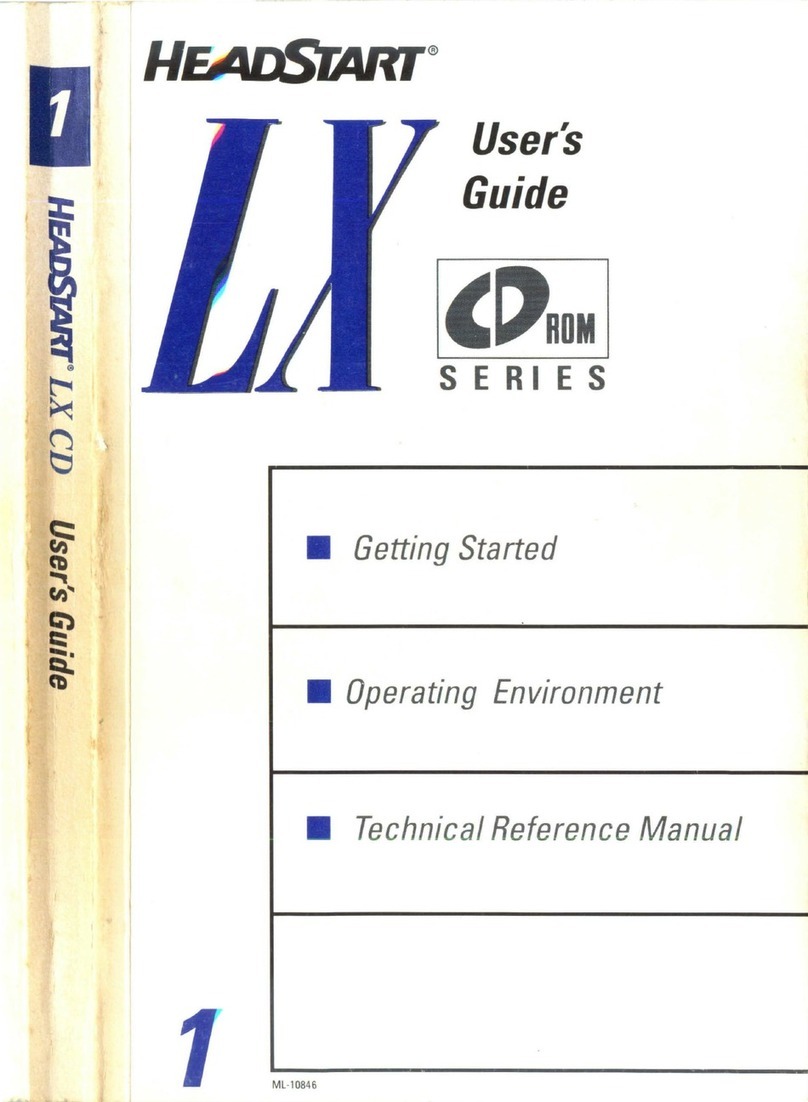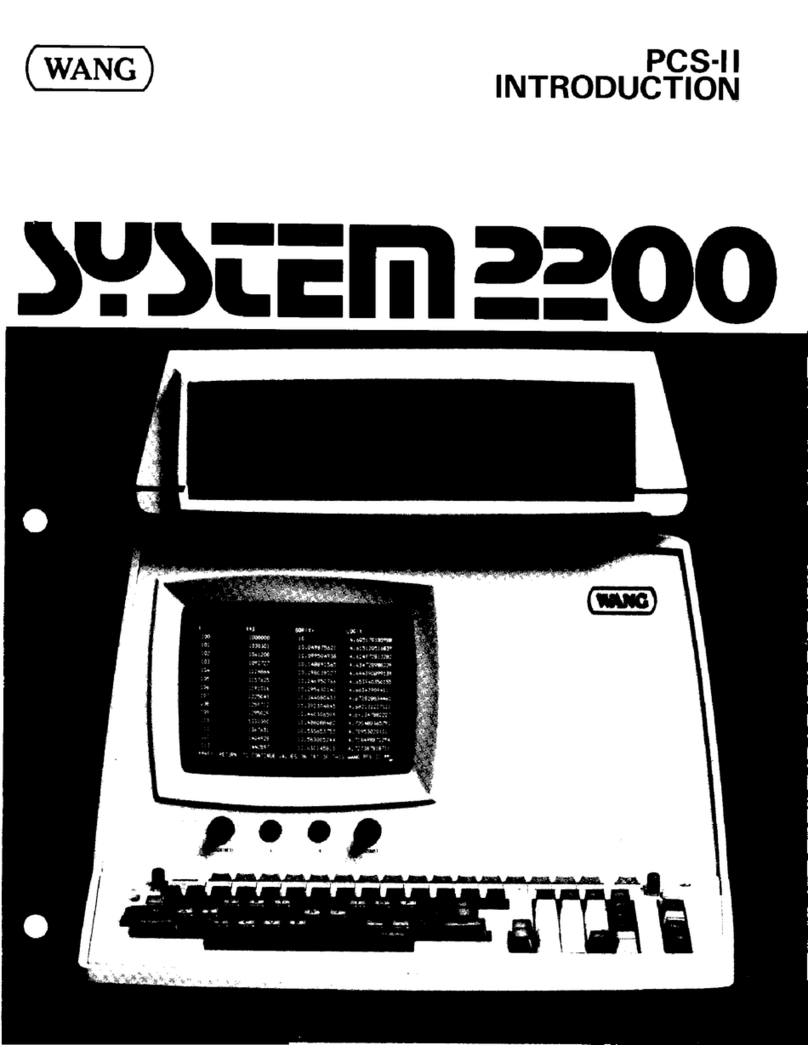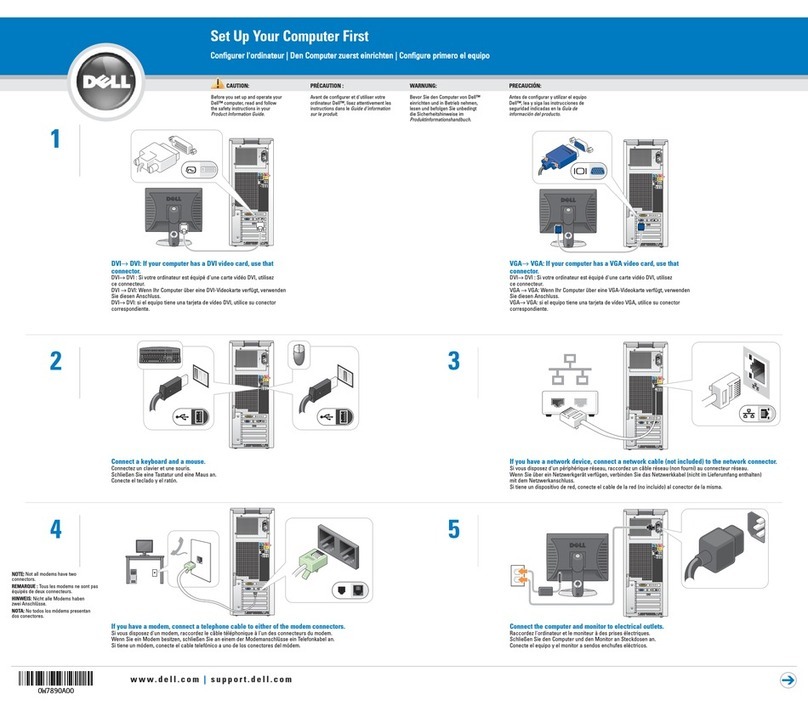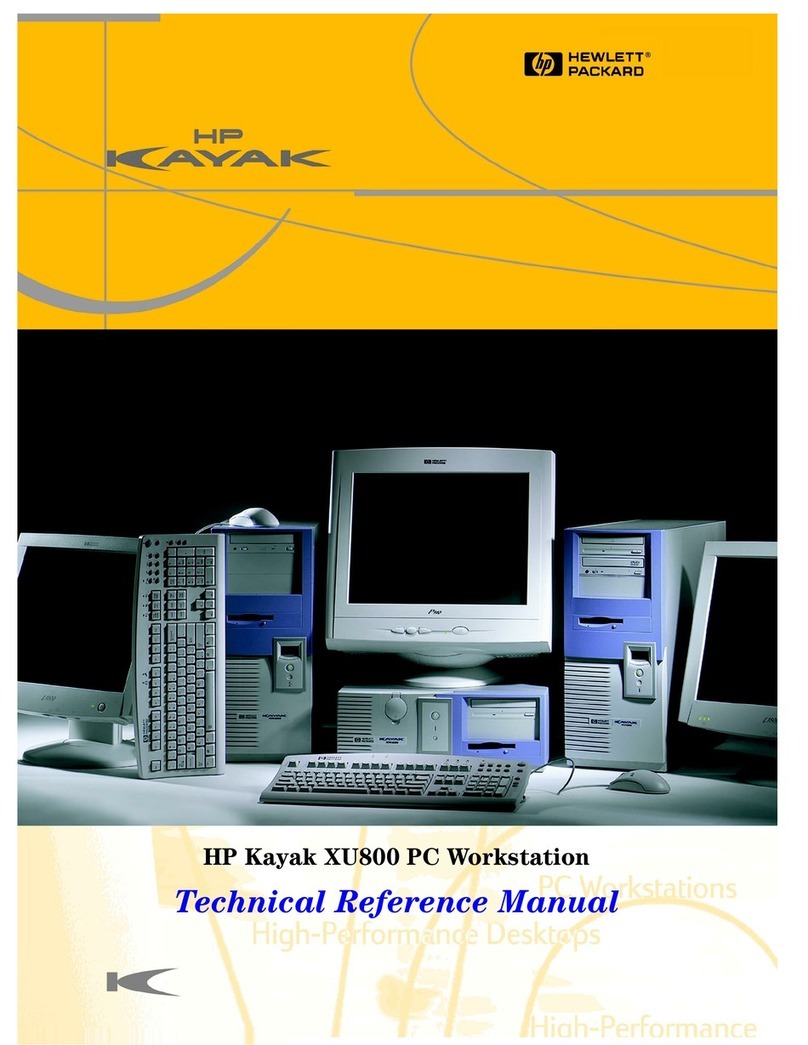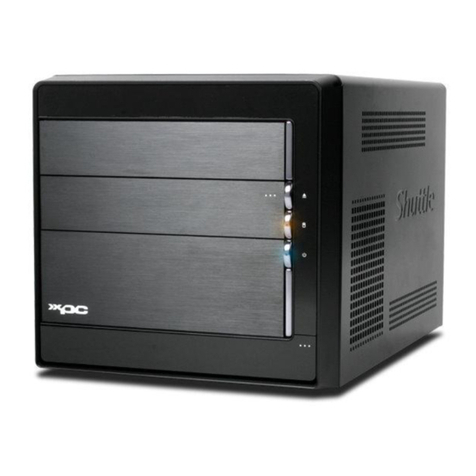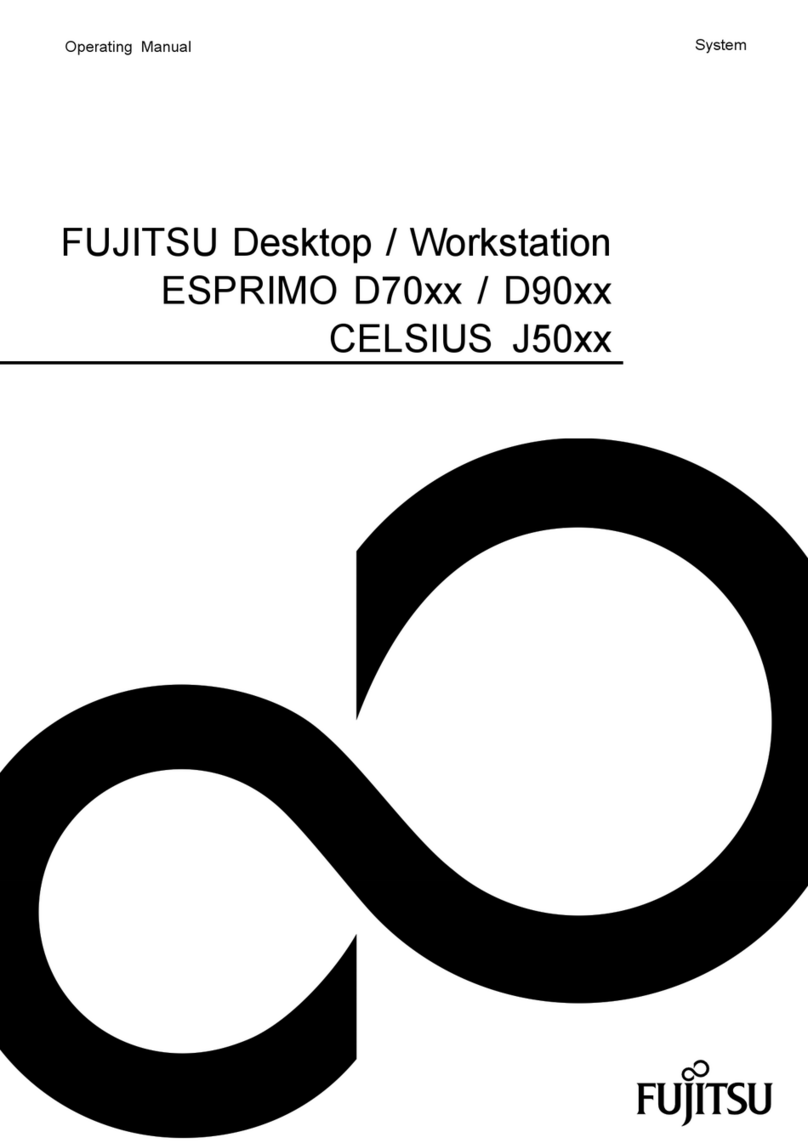Sperry Rand UNIVAC 490 SPURT User manual

G
ENE
R A L
REFERENCE
I\,/) A N U A L
UP-3900

This
manual
is
published
by
the
UNIVAC@Division
in
loose
leaf
format
as
a
rapid
and
complete
means
of
keeping
recipients
apprised
of
UNIVAC
Systems
developments.
The
UNIVAC
Division
will
issue
updating
packages,
utilizing
primarily
a
page-for-page
or
unit
replacement
technique.
Such
iss
uance
w
ill
provide
notification
of
hardw
are
and/or
software
chan
ges
and
refinements.
The
UNI\'
AC
Di'r./ision
reser'ves
the
right
to
~a
ke
such
additions,
corrections,
and/or
deletions
as,
in
the
judgment
of
the
UNIVAC
Division,are
required
by
the
development
of
its
respective
Systems.
@
REGISTERED
TRADEMARK
OF THE SPERRY RAND CORPORATION © 1963 • SPERRY RAND CORPORATION
PRINTED
IN
U.S.A.

PREFACE
This
ma.nual
provides
a
comprehensive
source
of
information
concerning
the
UNIVAC
490
Real-Time
System:
its
basic
units;
its
wide
variety
of
configurations
and
applications;
its
uniquely
efficient
instructions,
and
the
programming
packages
which
make
the
use
of
the
system
outstandingly
practical
and
economical.
The
bulk
of
the
manual
is
addressed
to
those
who
have
a
good
knowledge
of
general
computer
concepts
and
practices.
The
opening
section,
General
Description,
is
intended
for
the
use
of
anyone
with
an
interest
in
the
subject.
In
addition
to
a
discussion
of
the
system
as
a
whole
and
of
its
principal
components,
this
section
deals
with
the
relatively
new
concept
of
real
time
processing,
of
the
reasons
for
it,
of
the
manner
in
which
the
UNIVAC
490
Real-Time
System,
through
concurrency
of
operations,
combines
the
advantages
of
familiar
batch
processing
methods
with
those
of
real
time
operations.


UP-3900
UNIVAC
490
SPURT
Rev.
3 1
SECTION:
PAGE:
1.
CONTENTS
1.
CONTENTS
1-1
to
1-4
2.
INTRODUCTION
2-1
to
2-2
3.
GENERAL
DESCRIPTION
3-1
to
3-5
A.
Communication
Capabilities 3-2
B.
Mass
Storage
Faci!ities 3-2
C.
Real
Time
Central
Processor
Design
3-2
D.
Input/Output
Equipment
3-2
E.
An
Advanced,
Comprehensive
Programming
System
3-3
F.
Dependabi
Iity
of
Operation
3-3
4. COMPONENT
DESCRIPTION
4-1
to
4-18
A.
Central
Processor
4-1
8.
Clocks
4-3
C.
Subsystems
4-4
5.
PROGRAMMING
IN
SPURT
5-A-l
to
5-E-52
A.
COMPUTER
ELEMENTS
RELATED
TO
PROGRAMMING
5-A-l
8.
C.
1.
The
Computer
Word
5-A-l
2.
Addressing
5-A-3
3.
The
Computer
Instruction
5-A-3
CENTRAL
PROCESSOR
1.
Storage
Section
2.
Contra
I
Section
3.
Arithmetic
Section
4.
Input/Output
Section
5.
Registers
TH
E
SPURT
ASSEM8LY
SYSTEM
1.
The
SPURT
Statement
2.
The
SPURT
Coding
Form
5-8-1
5-8-1
5-8-1
5-8-1
5-8-1
5-8-1
5-C-l
5-C-l
5-C-l
1

1 2
Rev.
2
UNIVA~
q8D
5~URT
SEC
TION:
PA
GE:
D.
SPURT
INSTRUCTION
FORMAT
1.
The
General
Operand
2.
Comments
on
the
Presentation
of
the
8asic
SPURT
Instructions
E.
8ASIC
SPURT
INSTRUCTIONS
1.
Data
Transfer Instructions
2.
Shift Instructions
3.
Comparing
Instructions
4.
Jump
Instructions
5.
Modifying Instructions
6.
Subtraction
7.
Addition
8.
Multiplication
and
Division
9.
Logical
and
Selective Instructions
10.
Miscellaneous Instructions
11.
Assembler Macro-Operations
12.
8
as
ic
In
pu
t/
0 ut
put
Ins
truct
ion
s
6.
SPURT
INPUT/OUTPUT
UNDER
EXECUTIVE
CONTROL
A.
STATUS
CHECKING
1.
Er
ro
rAn
aIysis
2.
Examples
of
CKSTAT
B.
UNISERVO
IIA
MNEMONICS
1.
UNISERVO
IIA
Tape
Operations
2.
UNISERVO
IIA
Status
Words
C.
UNISERVO
IIIC
MNEMONICS
1.
UNISERVO
IIIC
Tape
Operations
2.
UNISERVO
IIIC
Status
Words
D.
UNISERVO
IliA
MNEMONICS
1.
UNISERVO
lilA
Tape
Operations
2.
UNISERVO
IliA
Status
E.
FLYING-HEAO-880
DRUM
MNEMONICS
1.
Flying
Head-880
Drum
Operations
2.
Flying
Head-880
Drum
Status
Words
F.
HIGH-SPEED
PRINTER
MNEMONICS
1.
High
Speed
Printer Operations
2.
High-Speed
Printer
Status
Words
G
CARD
MNEMONICS
1.
Card
Operations
2.
Card
Status
Words
5-0-1
5-0-1
5-0-5
5-E-l
5-E-l
5-E-2
5-E-6
5-E-7
5-E-9
5-E-ll
5-E-14
5-E-16
5-E-25
5-E-33
5-
E-35
5-E-40
6-A-i
to
6-i-2
6-A-l
6-A-2
6-A-3
6-8-1
6-8-1
6-8-3
6-C-l
6-C-2
6-C-4
6-0-1
6-0-2
6-0-4
6-E-I
6-E-l
6-E-3
6-F
-1
6-F
-2
6-F
-3
~-
G-1
6-G-2
6-G-8
UP-3900

U
P-3900
UNIVAC
490
SPURT
Rev.
2 1 3
SECTION:
PAGE:
H.
FASTRAND
MNEMONICS
6-H-l
L
FAST
RAN
0
Operations
6-H-2
2.
FASTRAND
Status
Words
6-H-3
3.
FASTRAND
Addressing 6-H-4
I.
PAPER
TAPE
MNEMONICS
6-1-1
L
Paper
Tape
Operations
6-1-1
2.
Paper
Tape
Status
Words
6-1-2
7.
CONSOLE
PRINTER
CONTROL
7-A-l
to
7-8-2
A.
CONSOLE
OUTPUT
OPERATIONS
7-A-l
8.
CONSOLE
INPUT
OPERATIONS
7-8-1
8.
PROGRAM
DEFINED
MACRO
OPERATIONS
8-1
to
8-5
A.
DEFINING
A
MACRO
OPERATION
8-1
L
The
MACRO
Statement
8-1
2.
The
ENDMAC
Statement
8-2
3"
Variable
Parameters
8-2
4"
Examples
of
MACRO
Definition
8-2
B,
CALLING
A
MACRO
o
"I
0-')
L
The
Call
Line
8-3
2"
Examples
of
Macro
Call
Line
8-3
C.
NESTiNG
OF
MACROS
8-4
D.
LABEL
REFERENCE
WITHIN
MACROS
8-5
9,
PROGRAM
PREPARATION
9-1 t09-16
A,
SPURT
REQUIREMENTS
9-1
L
The
Program
Header
9-1
2.
Allocation
9-1
8.
REX
REQUIREMENTS
9-5
L
The
Executive
Information
Region
9-5
2.
Declaration
of
Facility
Requirements
9-7
3.
Drum
and
FASTRAND
Statement
9-11
4.
Text
Statement
9-12
5.
Program
Segmentation
9-13
C.
COMMENTS
9-16

1 4
Rev,
3
UNIVAC
490
SPURT
UP-3900
SECTION:
PAGE:
10.
PROGRAM
TESTING
AND
CORRECTION
A.
SPURT
OUTPUTS
l.
Paper
Tape
Output
2.
High
Speed
Printer
Output
3.
High
Speed
Printer
Output
On
Magnetic
Ta
pe
4.
Magnetic
Tape
Output
5.
Concurrent
High
Speed
Printer
and
Magnetic
Tape
Output
8,
PROGRAM
TESTING
ROUTINES
L
Program
Testing
Operations
2.
Utilizing
Program
Testing
Routines
C.
CORRECTION
PROCEDURES
1,
Card
Correction
Procedures
2.
The
Ll
Corrector
3"
The
Card
Image
Corrector
Routine
-
CIMCO
D.
CODED
ERROR
OUTPUT
DURING
ASSEM8LY
11.
SYSTEM
PROCEDURES
12.
COBOL
13.
SORT
14.
MISCELLANEOUS
ROUTINES
A.
RMOPL
II
(Routine
for
Maintaining
an
Object
Program
Library)
1.
System
Requirements
2.
Tape
Composition
3.
Operations
Performed
4.
Parameter
Cards
B.
MITAR
II
(Master
Instruction
Tape
Assembly
Routine)
1.
System
Requirements
2.
Executi
ve
Se~uence
3.
Tape
Composition
4.
MITAR
Card
Parameters
10-A-1
to
10-0-2
10-A-1
10-A-2
10-A-3
1O-A-5
10-A-5
10-A-6
10-B~1
10-8-1
10-8-4
10-C-1
1O-C-1
10-C-2
lO-C-3
10-0-1
14-A-l
14-A-l
14-A-l
14-A-2
14-A-2
14-8-1
14-8-1
14-8-1
14-8-1
14-8-5

UP-3900
UNIVAC
490
SPURT
C.
CATUT
(Card
to
Magnetic
Tape
Utility
Routine)
L
System
Requirements
2.
Program
Structure
3.
Card
Input
Composition
and
Arrangement
4.
Description
of
Routines
and
Subroutines
in
CATUT
D.
PRINTAPE
(Magnetic
Tape
to
High
Speed
Printer
Utility
Routine)
1.
System
Requirements
E.
TRACE
IV
(Instruction
Monitoring
Routine)
1.
System
Requirements
2.
Output
Format
3.
Operations
Performed
4.
P
aramete
rs
F.
RMASL
(Routine
for
Maintaining
a
Source
Language
Library
1.
System
Requi
rements
2.
Input
Formai
3.
Library
Tape
Format
4.
Operations
Performed
5.
Parameter
Cards
G.
CIMCO
(Card
Image
Corrector
Routine)
1.
System
Requ
i
rements
2.
Operations
Performed
3.
Correction
Deck
Format
H.
CONVERSION,
EDITING,
AND
ARITHMETIC
ROUTINES
1.
Conversion
Routines
2.
Ed
iti
ng
Routi
nes
3.
Floating
Point
Routines
4.
00
ubi
e
Pre
cis
ion
Ari
th
met
ic R0
uti
nes
5.
Fie
Idata
Arithmetic
Routines
APPENDICES
A.
Computer
Instructions
D.
Peripheral
Subsystems
Rev.
2 1
SECTION:
PAGE:
14-C-l
14-C-l
14-C-l
14-C-1
14-C-6
14-0-1
14-0-1
14-E-l
14-E-l
14-E-1
14-E-1
14-E-3
14-F-1
14-F-1
14-F-l
14-F-2
14-F-2
14-F-3
14-G-l
14-G-1
14-G-l
14-G-l
14-H
-1
14-H
-3
14-H
-22
14-H
-34
14-H
-47
14-H-65
A-l
0-1
5


UP-3900
UNIVAC
490
SPURT
2 1
SECTION:
PAGE:
2.
INTRODUCTION
A.
REAL
TIME,
BATCH
PROCESSING,
AND
CONCURRENT
OPERATIONS
1.
Real
Time
Real
time
computers
were
originally
developed
for
military
purposes:
to
aim,
track,
and
guide
ballistic
missiles;
to
receive,
store,
analyze,
and
provide
useful
results
from
vast
radar
or
other
information
gathering
net
works
so
as
to
provide
the
basis
for
timely
decisions
on
the
part
of
human
beings
-
decisions
which
could,
when
required,
be
acted
upon
almost
instantly
at
locations
thousands
of
miles
removed
from
their
source.
The
essential
characteristics
of
real
time
computers
are
that
they
can
store
enormous
masses
of
information;
that
they
can
access,
or
reach,
and
act
upon,
any
item
or
group
of
items
of
the
informa-
tion
within
thousandths
of
a
second;
that
they
can
receive
and
transmit
data
from
and
to
small
or
large
numbers
of
remote
points
in
extremely
short
periods
of
time;
that
they
can
automatically
assign
priorities
to
many
different
operations
so
that
action
and
response
take
place
in
proportion
to
the
urgency
of
the
need.
The
expression
real
time
is
applied
to
computers
of
this
kind
because
thay
are
capable
of
keeping
pace
in
their
operations
with
the
occurrence
of
events
which
follow
one
another
with
great
rapidity
and
which
may
even
occur
sim
ultaneously.
The
U
ni
vac
Division
of
the
Sperry
Rand
Corporation
has
been
an
outstandingly
successful
pioneer
in
the
development
of
real
time
computers
and
realized
very
early
the
tremendous
potentials
of
their
application
to
business
situations.
The
result
of
this
realization
and
of
the
ensuing
development
work
is
the
UNIVAC
490
Real-Time
System
which
makes
it
possible
for
modern
management
to
take
the
fullest
advantage
of
modern
management
techniques.
Because
it
provides
proper
input/output
devices
for
every
type
of
business
transaction,
business
events
may
be
entered
into
the
system,
stored,
located,
related
to
other
events,
acted
upon
at
the
time
of
occurrence.
Management
by
excep-
tion
is
made
possible
on
a
truly
current
basis,
in
ample
time
to
correct
deviations
from
plan,
wheth-
er
these
involve
availability
of
working
capital,
sales
forecasts,
manning
and
machine
scheduling,
inventory
levels,
receipts
and
shipments
of
materials,
operating
costs,
or
controls.
The
sys
tem,
because
of
its
unique
mass
storage
and
comm
unications
facilities,
constitutes
an
excellent
instrument
for
the
centralized
control
of
decentralized
operations
whether
these
are
situated
at
a
large
central
site
or
are
dispersed
over
an
area
of
hundreds
or
thousands
of
miles.
Moreover,
the
system
in
many
instances
eliminates
the
need
for
original
documents
and
their
slow,
expensive
and
frequently
inaccurate
conversion
to
a form
suitable
for
input
to
a
computer
system.

2
SECTION:
2
UNIVAC
490
SPURT
UP-3900
PAGE:
The
question
is:
how
can
a
data
processing
system
be
made
to
provide
all
of
these
advantages
in
such
a
way
as
to
approach
the
maximum
utilization
of
the
equipment
employed,
the
highest
return
from
the
money
expended
for
it,
and
therefore
a
correspondingly
satisfactory
increase
in
the
profitability
of
the
enterprise.
The
answer
is
provided
in
the
UNIVAC
490
Real-Time
System
in
this
manner:
2.
Real
Time
and
Batch
Processing
The
requirements
for
real
time
action
are
known
frequently
to
occur
in
peaks
and
valleys.
In
many
businesses
these
requirements
tend
to
increase
from
early
morning
through
the
middle
of
the
day
and
to
taper
off
from
then
on.
In
other
businesses
the
occurrence
of
these
demands
may
be
sporadic.
It
makes
no
difference.
The
UNIVAC
490
Real-Time
System
is
so
designed
that
it
will
automatically,
as
its
facilities
are
freed
from
the
dynamic
demands
of
real
time
processing,
load
them
up
with
the
ordinary
day
to
day
back
log
of
less
urgent
work
-of
the
familiar
batch
processing
type
-
typically,
the
sequential
processing
of
sequentially
ordered
files
such
as
accounts
receivable,
payable,
or
payrolls.
3.
Concurrency
of
Operations
The
great
point
is
that
the
UNIVAC
490
Real-Time
System
is
at
no
moment
necessarily
committed
to
real
time
operations
or
to
batch
processing
operations
exclusively.
Both
may
proceed
concurrently
and
several
kinds
of
each
may
proceed
concurrently
under
the
control
of
an
internally
stored
execu-
tive
program.
But
the
real
time
operations
always
have
priority
and
the
system
will
assign
its
facilities
as
these
priorities
require,
relinquishing
them
to
other
activities,
such
as
engineering
calculations
or
normal
business
processing
tasks,
as
soon
as
they
are
no
longer
needed
to
keep
pace
with
real
time
events.
In
this
way
maximum
use
may
be
made
of
the
components
of
any
desired
configuration
of
the
UNIVAC
490
Real-Time
System;
and
the
ad
van
tages
of
its
enormous
storage
capaci
ty,
speed,
flexibility,
and
communications
capabilities
may
be
obtained
at
a
low
cost
per
unit
of
work
accomplished.
To
sum
up,
it
should
be
said
that
experience
indicates
that
the
UNIVAC
490
Real
Time
System
will
quite
probably
outperform
by
a
wide
margin
any
other
system
of
its
kind
in
a
wide
range
of
applications.
The
fact
that
it
can
actually
do
so
in
any
particular
situation
can
be
established
beyond
doubt
only
by
investigation
and
analysis.
This
fact
has
already
been
established
many
times
and
is
being
established
with
greater
and
greater
frequency
as
larger
numbers
of
organizations
examine
the
system's
capabilities.

UP-3900
UNIVAC
490
SPURT
3
SECTION:
PAGE:
3.
GENERAL
DESCRIPTION
For
years
there
has
been
an
urgent
need
for
a
business
data
processing
system
specifically
designed
to
meet
the
steadily
increasing
pressures
of
costs
vs.
profits,
of
competition,
of
the
need
for
radically
improved
communications,
for
improved
service
to
customers,
for
more
efficient
inventory
management,
for
more
effective
controls
--
for
'improved
over
all
capability
to
cope
with
the
constantly
growing
complexity,
diversity,
wide
spread
nature,
and
sheer
size
of
modern
business.
The
UNIVAC
490
Real-Time
System
is
the
first
and
only
system
specifically
designed
to
meet
these
needs
and
which
has
proved
in
daily
use
that
it
does
meet
these
needs,
and
more,
at
an
entirely
reasonable
cost.
It'
is
by
a
long
way
the
most
versatile
and
the
most
comprehensive
data
processing
system
yet
produced.
The
system
provides
the
most
effecti
ve
in
strum
ent
in
existence
for
the
centralized
control
of
decentralized
operations.
The
same
characteristics
which
account
for
this,
account
also
for
its
other
advantages,
which
are
many.
These
characteristics
and
advantages,
stated
very
briefly,
are:
•
The
system
itself
can
communicate
directly
with
central
site
or
remote
locations
-
points
of
sale
or
other
customer
contact,
production
or
transportation
facilities,
warehouses,
domestic
or
foreign
branches
or
affiliates.
•
The
system
can
store
large
masses
0 f
info
nna
tion
and
almost
instantly
retrieve
and
deli
ver
in
useful
form
any
item
or
group
of
items
-
data
required
for
customer
service,
for
the
most
advan-
tageous
stocking
and
distribution
of
materials
or
products,
or
for
use
by
central
or
local
manage-
ment.
1

3 2
UNIVAC
490
SPURT
UP-3900
SECTION:
PAGE:
•
Under
automatic
executive
program
control
the
system
can
concurrently
execute
several
programs
-
the
saving
in
processing
time,
and
therefore
in
cost,
is
very
large.
•
The
system
operates
in
real
time
-
that
is,
it
responds
to
the'
need
for
action
in
a
period
of
time
proportional
to
the
urgency
of
the
need
-
first
things
are
done
first.
•
The
system
can
be
depended
upon
to
provide
the
information
necessary
to
base
this
minute's
or
this
hour's
decisions
on
informa
tion
up
to
date
as
of
the
minute
or
the
hour
-
the
value
of
infor-
mation
diminishes
rapidly
with
the
passage
of
time
-
this
system,
because
the
data
it
provides
reflects
the
present
facts,
makes
it
possible
to
avoid
many
difficulties
and
to
seize
many
opportunities
which
would
otherwise
be
lost.
A.
COMMUNICATION
CAPABILITIES
The
system
is
adaptable
to
any
standard
common
carrier
communication
code,
rate
of
transmission,
or
equipment.
It
may
be
connected
to
a
few
or
hundreds
of
low
cost
communication
lines.
B.
MASS
STORAGE
FACILITIES
Drum
storage
capacity
ranging
from a
few
million
to
billions
of
characters
-
average
access
time
17
or
92
thousandths
of
a
second
-
magnetic
tape
units
compatible
with
other
UNIVAC
systems
or
with
thpse
of
IBM -
read/write
speeds
up
to
125,000
characters
per
second;
number
of
units,
as
in
the
case
of
other
peripheral
devices,
expandable
according
to
requirements.
The
combination
of
almost
unlimite~
low
cost
comm
unications
facilities
plus
almost
unlimited
random
access
storage
(at
the
lowest
cost
per
character
stored)
provides
service
and
economy
never
before
approached
in
any
system.
C.
REAL
TIME
CENTRAL
PROCESSOR
DESIGN
Sixty
two
basic
instructions
which
may
be
modified
to
provide
unprecedented
programming
versatility;
magnetic
core
storage
capacity
of
16,000
to
32,000
computer
words
of
30
bits
each;
10
millionths
of
a
seco
nd
average
instruction
execution
time;
the
ability
to
accomodate
any
standard
comm
unication
code
or
speed;
the
ability
to
carry
out
several
programs
concurrently,
to
make
most
effective
use
of
random
access
drum
storage
as
well
as
magnetic
tapes;
plus
the
ability
under
automatic
executive
program
control
to
perform
all
of
its
functions
including
control
of
or
response
to
central
or
remote
input/out-
put
devices
in
'a
time
scale
proportional
to
the
need
for
action;
and
precision
electronic
clocks
for
use
in
compiling
statistics
for
analysis
and
improvement
of
computer
utilization,
for
initiation
of
action
at
specific
times
during
the
day,
and
for
checking
the
proper
execution
of
operations.
In
addi-
tion
to
all
of
this,
the
Central
Processor
may
be
connected
to
a
satellite
computer
or
to
another
entire
490
system
complex.
D.
INPUT/OUTPUT
EQUIPMENT
In
addition
to
its
mass
storage
drums
and
tapes,
the
system
may
employ
a
variety
of
input/output
devices
including
600
card
per
minute
reade;:s;
:1.50
card
per
u:.inute
p<lncnes;
700
to
922
Er.cs
pc:
:r:ir.-
ute
printers,
punched
paper
tape
systems
(5
to
8
channel
-
400
characters
per
second
reading
speed;
110
characters
per
second
punching
speed).

UP-3900
UNIVAC
490
SPURT
3 3
SEC
TION:
PAGE:
E.
AN
ADVANCED,
COMPREHENSIVE
PROGRAMMING
SYSTEM
The
UNIVAC
490
Real-Time
System
is
provided
with
a
rapid,
efficient
assembler,
(SPURT),
a
COBOL
compiler,
and
an
executive
routine
(REX)
which
coordinates
the
operations
of
all
elements
of
the
system,
making
it
entirely
feasible
to run
several
independent
programs
concurrently*
and
automati-
cally
to
assign
priority
to
most
urgent
requirements,
such
as
those
of
a
communications
subsystem,
as
they
arise.
The
programming
package
also
includes
an
unusually
efficient
SORT
/MERGEroutine,
utility,
service
and
program
testing
routines,
and
routines
for
the
most
effective
management
of
all
peripheral
units.
Very
large
savings
of
time
and
money
are
realized
by
these
means.
F.
DEPENDABILITY
OF
OPERATION
This
system
has
established
an
extraordinary
record
of
operational
dependability
which
results
from
the
Univac
Division's
years
of
experience
in
the
design
of
solid
state
computers
of
many
kinds:
military,
scientific,
and
commer
cia!.
Reliability
design
goals
have
been
exceeded,
in
actual
perfor-
mance,
by
well
over
100%.
*
These
programs
may
be
written
quite
independently
-
the
REX
executive
routine
relieves
the
programmer
of
all
concern
with
accomplishment
of
concurrent
operations.

3
SECTION:
I
pAGE
, 4
UNIVAC STANDARD COMMUNI·
CATIONS SUBSYSTEM
UNIVAC
490
SPURT
COMPUTER
TO
COMPUTER
CONN
ECTION
COMPUTER
DAY
CONSOL
E
CLOCK
GENERAL PURPOSE
SUBSYSTEMS
Figure
3-7.
UNIVAC
490
Real-Time
System
-
Simplified
Block
Diagram
UP-3900

UP-3900
UNIVAC
490
SPURT
3
SECTION:
PAGE:
UNIVAC
STANDARD COMMUNICATION SUBSYSTEM
CD
GENERAL
PURPOSE SUBSYSTEMS
SIMPLEX
OUT
PRIVATE
LINE
TELETYP
EWR!TER
(60
TO
100
WPM)
SIMPLEX IN
PRIVATE
LINE
TELETYPEWRITER
(HALF-DUPLEX-
60
TO
100
WPM)
PRiVATE
LINE
TELETYPEWRITER
(FULL-
DUPLEX-60
TO
100
WPM)
WiDE
AREA DATA SERViCE
(WADS)
OR
TELETYPE-
WRITER
EXCHANGE
SERVICE
(TWX)
(HALF-DUPLEX-lOO
WPM)
DIRECT DISTANCE DIALING
(DDD)
OR
WIDE
AREA
TELEPHONE SERVICE
(WATS)
(HALF-
DUPLEX-1200
BITS/SEC)
CD
PRiVATE
LINE
TELEPHONE
(FULL-DUPLEX-2000
M\
BITS/SEC
AND UP) 0
1 1 I
~
2
INTER
COMPUTER
CHANNELS
I
--
PUNCH
CARD
CONTROL
UNiT
MAGNETIC
TAPE
CONTROL
UNIT
UNISERVO
IIA
MAGNETIC
TAPE
CONTROL
UNIT
UNISERVO
lilA
r-
~
I 10...
~
80 COLUMN
PUNCH
80
COLUMN
READER
UNISERVO
IIA
(READ
OR
WRITE)
UNISERVO
lilA
(READ/READ
OR
READ/WRITE)
COMMUNI
CA
TION
MUL
TIPLEXER
(UP
TO
64
SIMPLEX
LINES
AVAILABLE
SINGLE CHANNEL CONTROL UNITS
ALSO
AVAILABLE
FOR
UNISERVO III A TAPE UNITS
!N
MODULAR
UNITS)
CD
COMPUTER
CONSOLE
NOTE:
DAY
CLOCK
CD
An
y
one
Subsy
stem
is
capable
of
handling
different
types
of
communi
cation
facilities
at
the
same
time.
o
Where
indicated,
associated
common
carrier
equipment
is
required
in
addition
to
the
line
facilities.
0ThiS
chart
only
shows
a
few
of
the
typical
communication
subsystems
that
can
be
connected
to
th e
sy
stem,
many
other
configurations
are
possible
-
-
-
MAGNETiC
TAPE
CONTROL
UNIT
UNISERVO
IIIC
MAGNETIC
DRUM
CONTROL
UNIT
FASTRAND
CONTROL
UN
IT
HIGH-SPEED
PRINTER
CONTROL
UNIT
Figure
3-2.
UNIVAC
490
Real-Time
System
(Expanded
Block
Diagram)
-
-
-
UNISERVO
IIIC
(IBM
COMPATIBLE)
PAPER
TAPE
READER
PAPER
TAPE
PUNCH
F.H.
880
DRUM
UNIT
(3,932,160
A/N
CHARACTERS
PER
DRUM
UNIT)
FASTRAND
DRUM
UNIT
64.8
MI
LLiON
-
A/N
CHARACTERS
PER
DRUM
UNIT
HIGH-SPEED
PRINTER
1
CARD
PUNCH
PER
CONTROL
UNIT
1 CARD
READER
PER
CONTROL
UNIT
UP
TO
12
IIA
UNITS
PER
CONTROL
UNIT
UP TO
16
lilA
UNITS
PER
CONTROL
UNIT
I
uP
TO
i2
iiiC
TAPE
UNITS
PER
CONTROL
UNIT
1
READER
PER
CONTROL
UNIT
1 PUNCH
PER
CONTROL
UNIT
UP TO 8
DRUM
UNITS
PER
CONTROL
UNIT
UP
108
FAST
RAND
DRUM
UNITS
PER
CONTROL
UNIT
HIGH-SPEED
PRINTER
PER
CONTROL
UNI T
5


UP-3900
UNIVAC
490
SPURT
4
SECTION:
PAGE:
4.
COMPONENT
DESCRIPTION
A.
CENTRAL
PROCESSOR
Figure
4-
7.
Central
Processor
STORAGE
CAPACITY
WORD
LENGTH
NUMBER
OF
I/O
CHANNELS
AVERAGE ACCESS TIME
CYCLE
TIME
AVERAGE INSTRUCTION
EXECUTION TIME
16,
384
words
(30
bits/word)
or
32[ 768
words
30
bits
(may
be
accessed
as
15
bit
half word)
6
or
14
1.9
microseconds
6
microseconds
10
microseconds
The
UNIVAC
490
Real-Time
System
Central
Processor
is
a
binary
computer
designed
for
real
time
and
batch
processing,
for
concurrency
of
operations,
for
the
employment
of
advanced
programming
concepts
such
as
those
incorporated
in
the
SPURT
assembler,
the
REX
executive
routine,
the
various
input/output
routines;
and
for
the
use
of
extremely
extensive
and
rapid
mass
random
access
storage
and
communications
subsystems
as
well
as
magnetic
tape
auxiliary
storage,
punche
d
card
equipment,
and
a
variety
of
special
peripheral
devices.
It
employs
62
basic
instructions
which,
by
automatic
manipulation
directed
by
the
contents
of
the
instruction
word,
can
be
made
to
perform
practically
any
desired
programming
function.
1

4
SECTION:
2
UNIVAC
490
SPURT
PAGE:
A
simplified
diagram
of
the
principal
elements
of
the
Central
Processor
is
shown
in
Figure
4~2.
For
directness
of
presentation,
only
those
elements
referred
to
in
program
instructions
are
shown.
•
Control
SUBSYSTEMS
12
CHANNELS
INPUT
/OUTPUT
OTHER COMPUTER
2 CHANNELS
Figure
4-2.
Central
Processor
-
Simplified
Block
Diagram
The
control
portion
of
the
Central
Processor
coordinates
the
flow
of
data
between
the
arithmetic
and
storage units.
It
contains
a
program
address
counter
which
holds
the
15
bit
address
of
the
next
ins
truction
to
be
executed
throughout
the
program
and
seven
15
bit
index
registers
.
•
Storage
Storage
consists
of
16,384
or
32,768
30
bit
words.
Areas
of
storage
are
automatically
allocated
by
the
executive
routine
(REX)
according
to
the
requirements
of
operating
programs.
•
Arithmetic
The
arithmetic
unit
comprises
a
30
bit
"A"
register,
a
30
bit
"Q"
register
and
a
30
bit
adder.
TIlt::
t~
A"
CJ.lld
"Q"
i"~gI5tt:i5
Cire
uSed
togethel
iii
wultiplicaticrl
arld
div'isi~~
~r:d,
'C
y'l,The:1 de8i!"eci,
in
60
bit
capacity
.
.,t\!!
arith:r:etic
ape~8.tians
are
perf0!'!!:ed
h bi!"!afY fO!'!11. SUb
tr
8CHol1
i~
per-
formed
in
the
end
arollnd
borrow
manner;
addition
is
performed
by
complementation
of
the
addend
and
subtraction
from
the
augend.
UP-3900
Other Sperry Rand Desktop manuals
